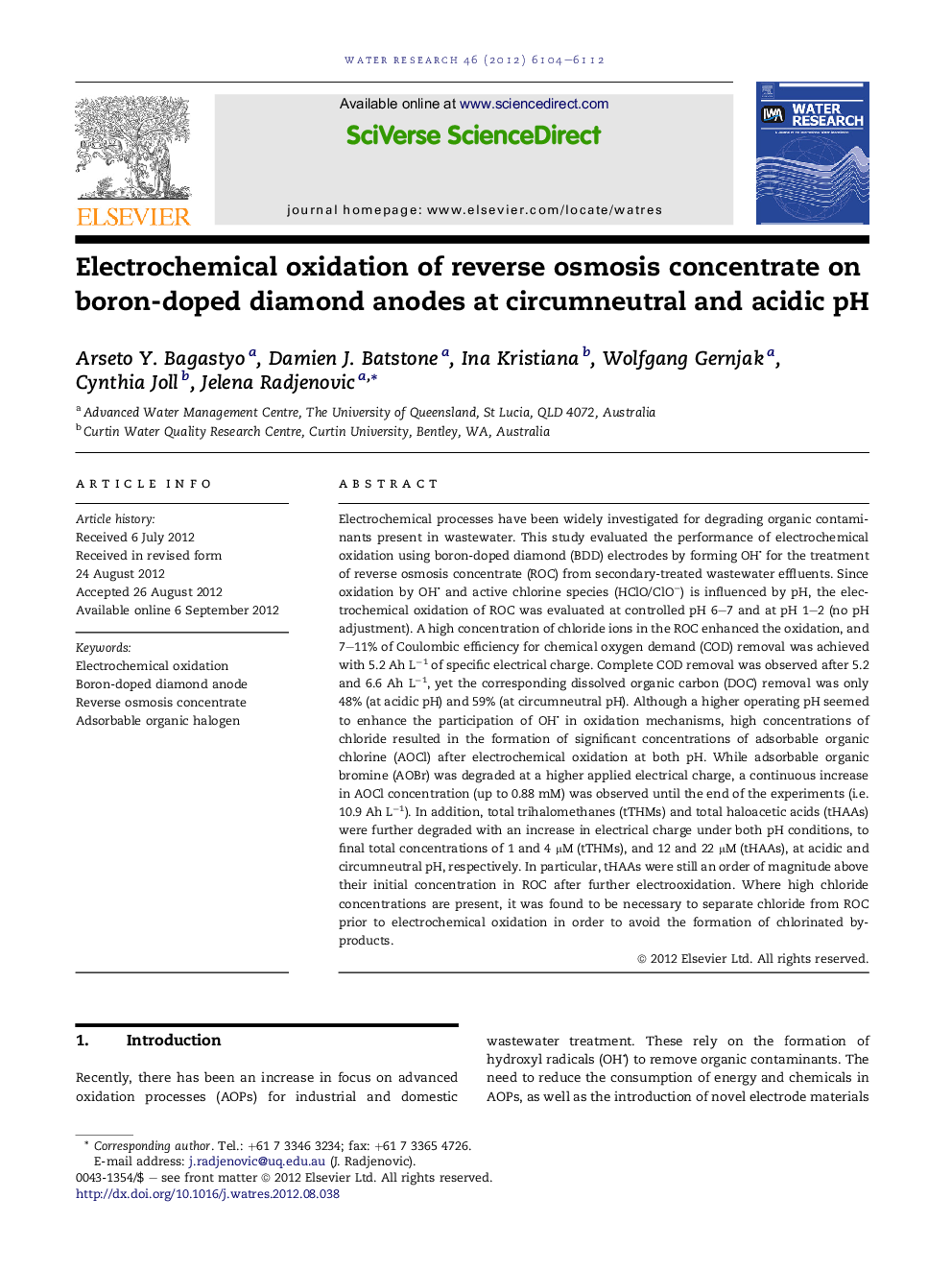| کد مقاله | کد نشریه | سال انتشار | مقاله انگلیسی | نسخه تمام متن |
|---|---|---|---|---|
| 4482054 | 1316846 | 2012 | 9 صفحه PDF | دانلود رایگان |

Electrochemical processes have been widely investigated for degrading organic contaminants present in wastewater. This study evaluated the performance of electrochemical oxidation using boron-doped diamond (BDD) electrodes by forming OH for the treatment of reverse osmosis concentrate (ROC) from secondary-treated wastewater effluents. Since oxidation by OH and active chlorine species (HClO/ClO−) is influenced by pH, the electrochemical oxidation of ROC was evaluated at controlled pH 6–7 and at pH 1–2 (no pH adjustment). A high concentration of chloride ions in the ROC enhanced the oxidation, and 7–11% of Coulombic efficiency for chemical oxygen demand (COD) removal was achieved with 5.2 Ah L−1 of specific electrical charge. Complete COD removal was observed after 5.2 and 6.6 Ah L−1, yet the corresponding dissolved organic carbon (DOC) removal was only 48% (at acidic pH) and 59% (at circumneutral pH). Although a higher operating pH seemed to enhance the participation of OH in oxidation mechanisms, high concentrations of chloride resulted in the formation of significant concentrations of adsorbable organic chlorine (AOCl) after electrochemical oxidation at both pH. While adsorbable organic bromine (AOBr) was degraded at a higher applied electrical charge, a continuous increase in AOCl concentration (up to 0.88 mM) was observed until the end of the experiments (i.e. 10.9 Ah L−1). In addition, total trihalomethanes (tTHMs) and total haloacetic acids (tHAAs) were further degraded with an increase in electrical charge under both pH conditions, to final total concentrations of 1 and 4 μM (tTHMs), and 12 and 22 μM (tHAAs), at acidic and circumneutral pH, respectively. In particular, tHAAs were still an order of magnitude above their initial concentration in ROC after further electrooxidation. Where high chloride concentrations are present, it was found to be necessary to separate chloride from ROC prior to electrochemical oxidation in order to avoid the formation of chlorinated by-products.
Figure optionsDownload high-quality image (125 K)Download as PowerPoint slideHighlights
► Electrochemical oxidation of ROC on BDD anode was performed at pH 1–2 and pH 6–7.
► Enhanced DOC removal was observed at pH 6–7.
► Formation of THMs, HAAs and AOX during the electrooxidation was reported at both pH.
Journal: Water Research - Volume 46, Issue 18, 15 November 2012, Pages 6104–6112